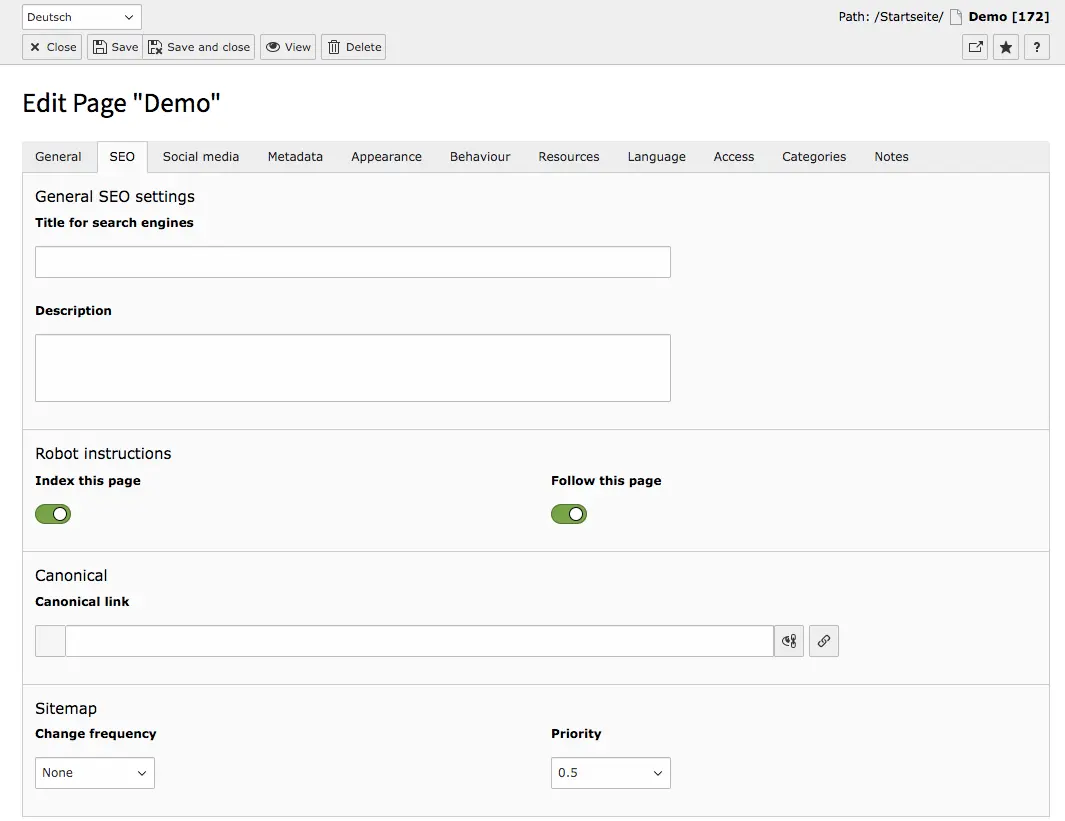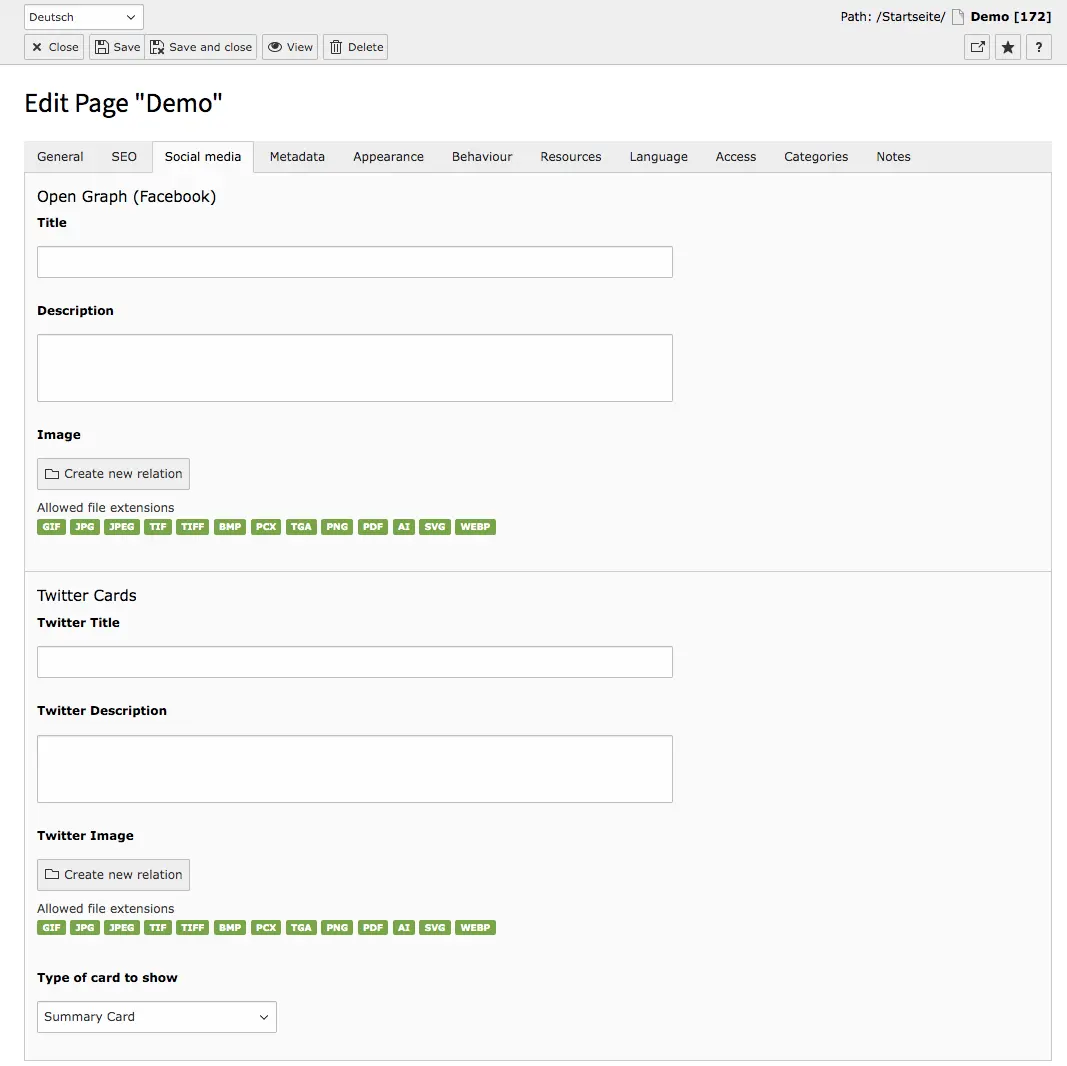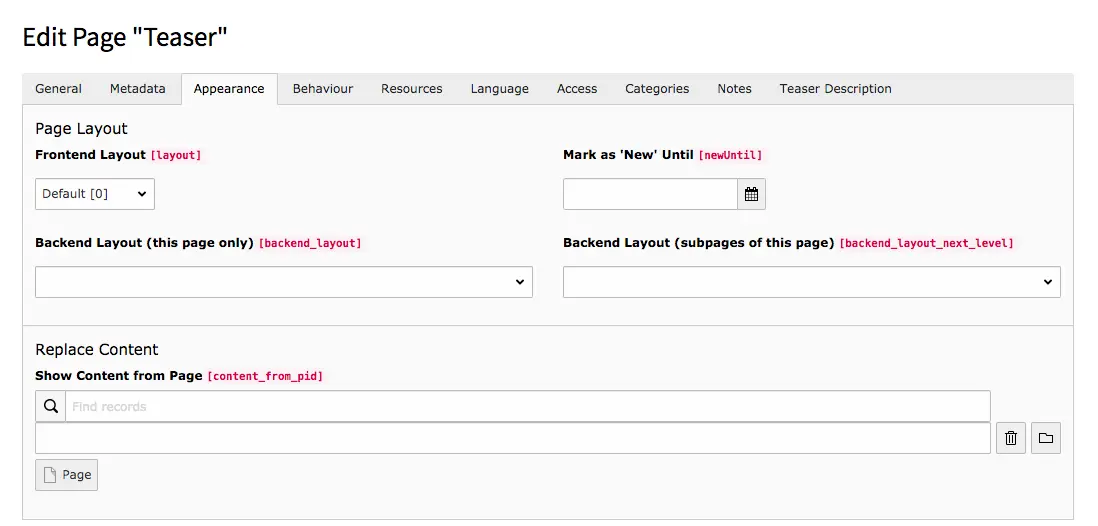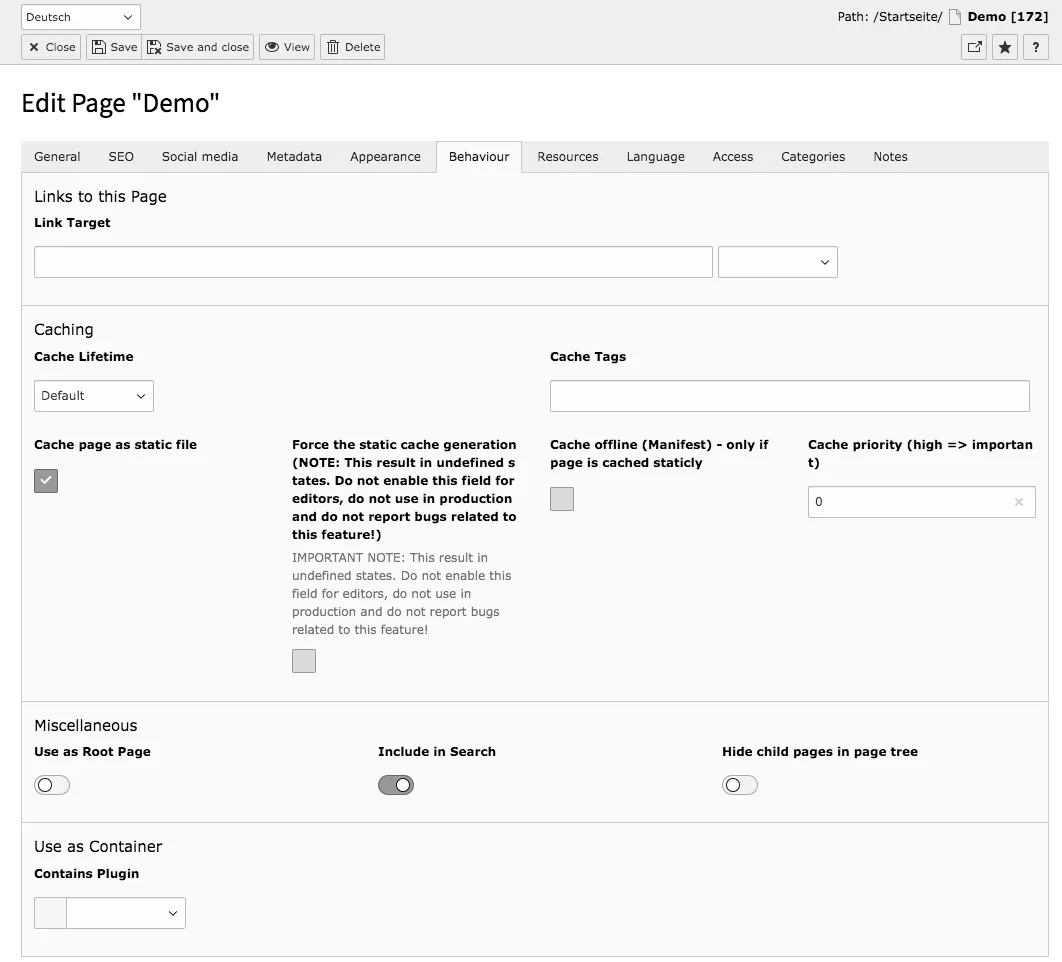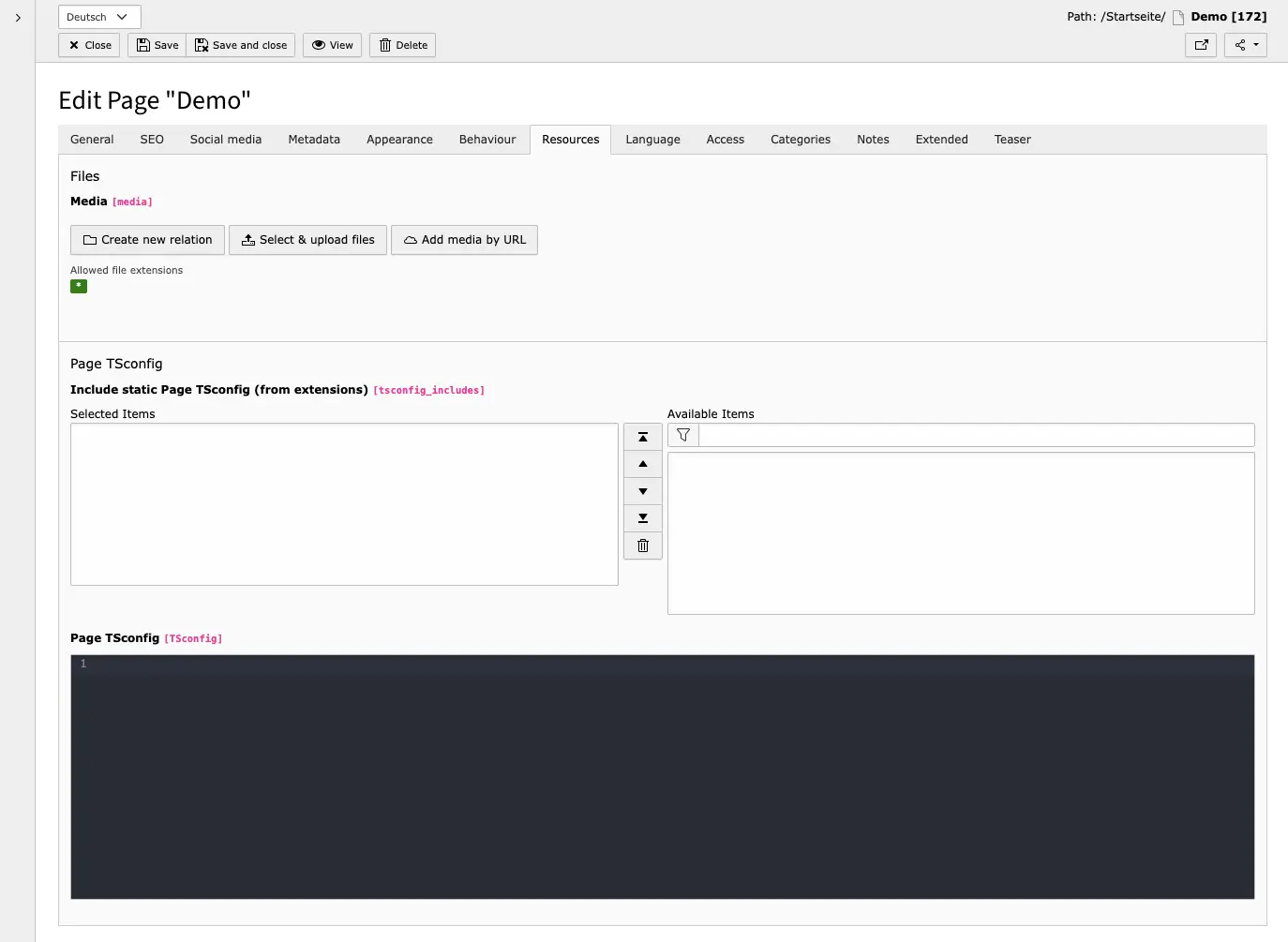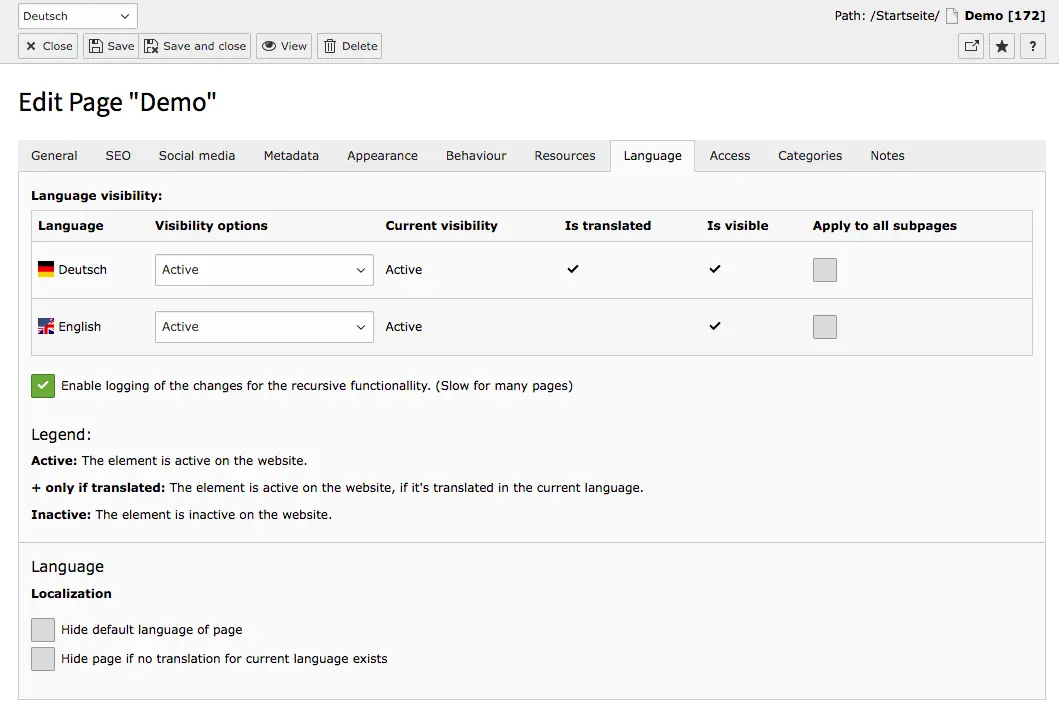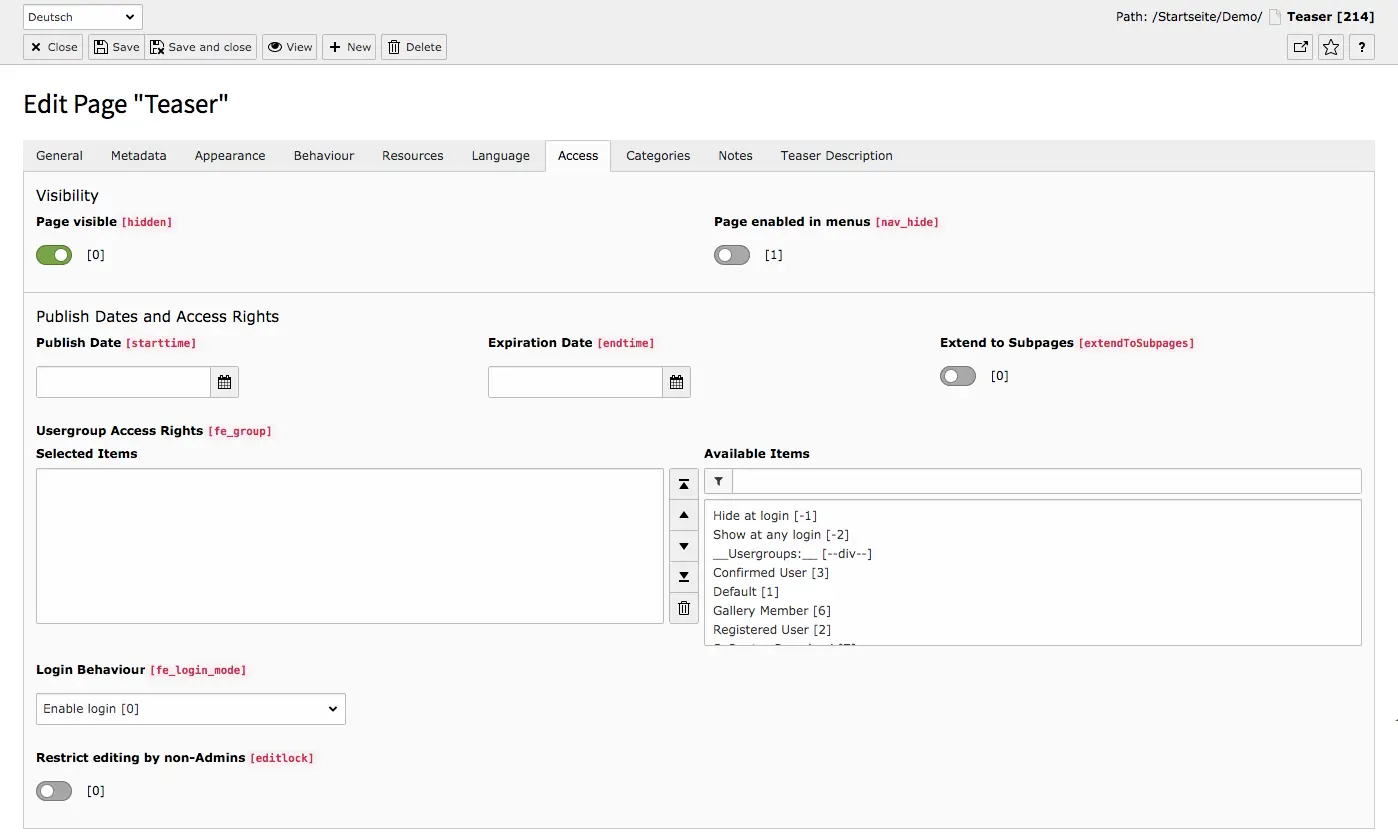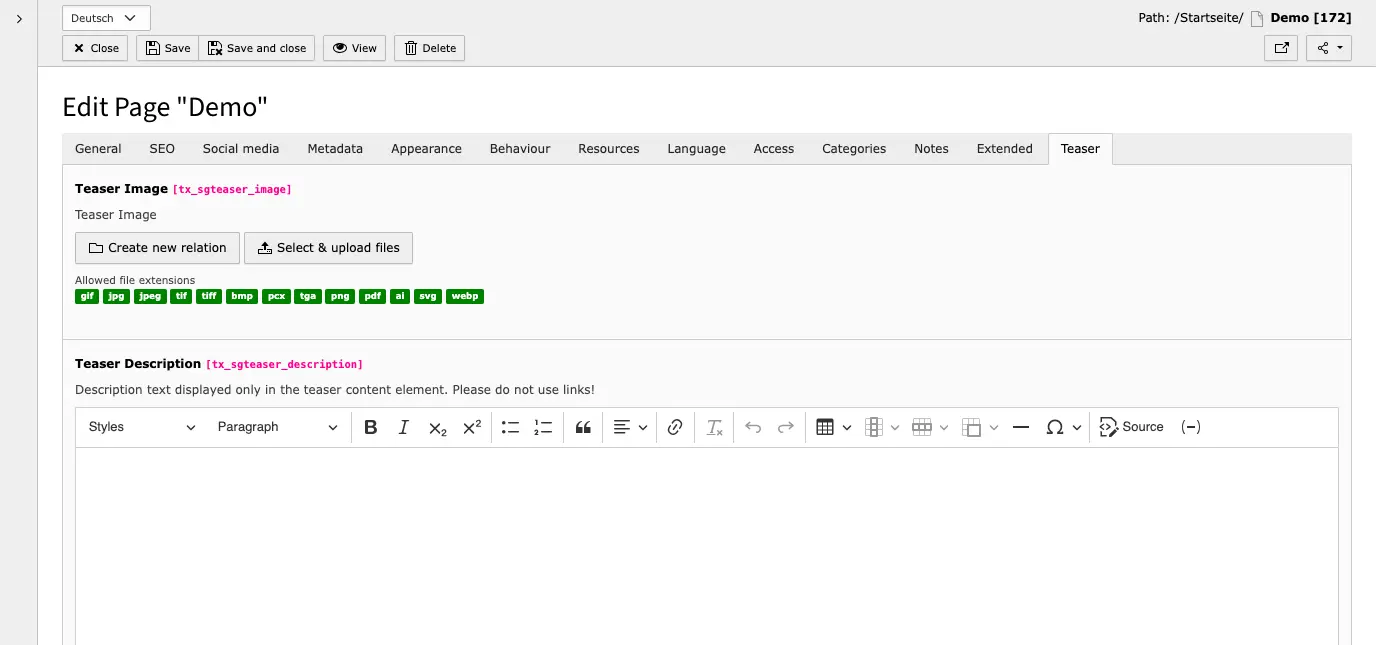SEO
General SEO settings
The title for search engines serves as the headline of a search result. This should be meaningful, unique and yet concise. So that the headline is not shortened, it should not be longer than 55 characters.
The description is output to search engines as the text of the search engine result, which can be seen below the title and, in the best case, provides a concise overview of the content of the page. The text should also contain important keywords for the page. To avoid truncation, the description should not exceed 135 characters.
Robot instructions
'Index this page' and 'Follow this page' are settings for search engines and tell them how to handle a page. The checkmarks are set by default. Uncheck 'Index this page' if you don't want search engines to index the current page. This makes sense for pages that would not provide useful information to users, such as the imprint. The setting 'Follow this page' causes links of a page to be followed by the crawlers. You can turn this option off if, for example, there are links on a page that are not safe or that lead to pages you don't want your site to be associated with. Adjust these options only if you are sure and it is really necessary.
Canonical
You use a canonical link when the current page contains the content of another page. This way you refer to the original page as the main page. When a search query is made, the main page is displayed. Search engine penalties due to duplicate content can be avoided in this way.
Sitemap
With the change frequency you can set how often search engines should consider changes on pages. The default setting 'none' simply means that no selection has been made for this. The priority determines how important a page is. A value of 0.5 is always automatically defined. The highest value is 1.0, which can be set for the homepage, for instance. In general, however, you can leave these settings at the default values if there is no reason to change them.

